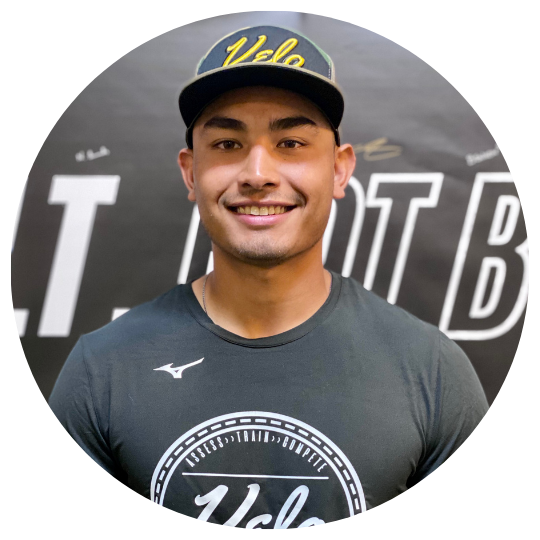Hitting: How Movement Screening Informs the Training Process
For hitters, a key part of the Velo Baseball experience is going through your initial assessment which includes a movement screen and a swing analysis.
Movement screening uses a series of basic tests to determine if the athlete has any mobility (usually tightness) or stability (usually lack of strength) issues. The initial movement screen is argued to be the most important part of the assessment. This screen allows the instructors to understand what the athlete does well, but more importantly gives the instructors feedback on any limitations the athlete may have. If an athlete fails any of these tests that’s okay, sometimes an athlete's body doesn’t allow them to move in certain ways. These limitations give the instructor hints as to what hitting inhibitors the athlete will have in their swing.
For example, let’s say there is an athlete who struggles with the one of our hip internal rotation tests which doesn’t improve when stabilizing their hips, has limited depth in their squat, and also exhibits limited ankle inversion. The instructor can almost guarantee the athlete will hang back, lose their base, drift, and lose space in their swing, before even seeing it.
In other words, athlete’s movement screens leave clues as to what trainers can expect when analyzing their swing.
After the movement screen the trainer will collect video footage as well as Blast Motion data of the player's swing. Once this is collected the trainers sit down and analyze the players swing. As mentioned earlier hanging back, loss of base, drifting, and loss of space are just a few inhibitors instructors may look for.
This brings up the question “What is the most important inhibitor to work on?” and that answer all depends on the athlete.
These inhibitors are directly related to the three components of hitting: Power, Contact, and Efficiency. Inhibitors like hanging back, and drifting are going to cause the athlete to lose power in their swing, where things like loss of base and loss of space are going to create inconsistencies in hitters swings as well as create an inefficient swing.
So an athlete fails a few tests, now what?
Of course we would like all our athletes to pass every element of the movement screen with flying colours but rarely is that the case. Mobility issues can usually be fixed/improved but it isn’t something that happens overnight, it takes time and consistency to improve mobility. In many cases the instructor will incorporate mobility work into the athletes warm up to ensure they are working on that mobility issue every session. Mechanical adjustments on the other hand can be a quicker fix (depending on how well the athlete is at adopting it into their swing) but can cause other issues if the body cannot move properly. Ex. say an athlete has a hard time externally rotating their front hip when swinging. A simple mechanical adjustment would be to have that player land with their lead foot open pointing three quarters of the way towards the pitcher allowing space for their hips to rotate freely. This allows the player to swing harder as well open up space for the bat to hit the inside pitch. However, doing this takes away the players ability to store energy in their front leg causing them to be more susceptible to off-speed pitches.
Oftentimes coaches try to cookie cutter a swing out for every player or have the entire team working on the same thing. More times than not players' physical limitations won’t allow them to move the way the coach wants them to or they will be given drills that don’t apply to the deficiencies in their swing.
Take the time to understand your athletes, what their physical limitations are, and what swing inhibitors are most important for them to work on.
About the author:
Andy Leader is the lead hitting trainer at Velo Baseball. Andy is OnBaseU Certified and will be growing new hitting department as we branch out from exclusively training pitchers. He brings a wealth of playing and coaching experience to the team.



